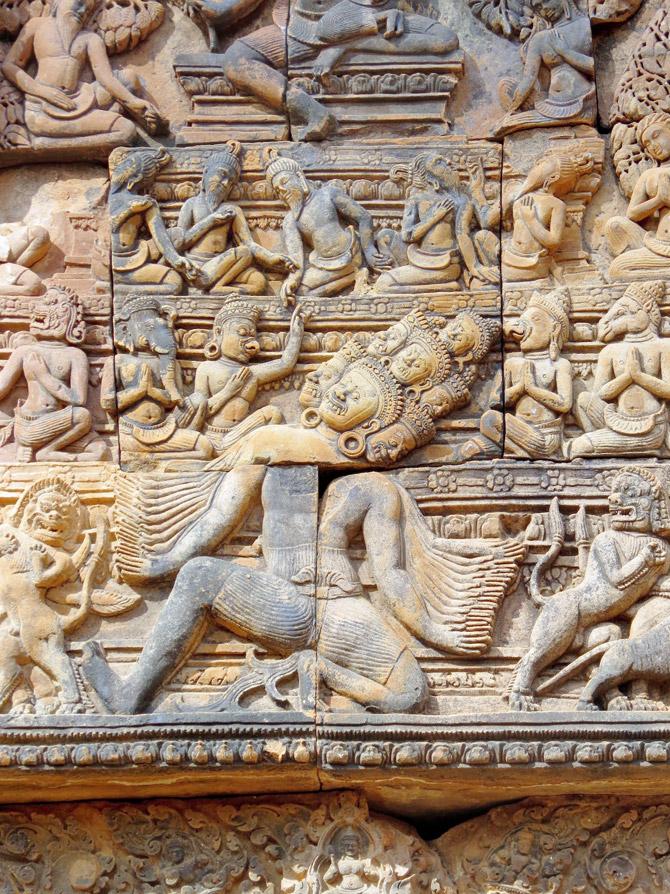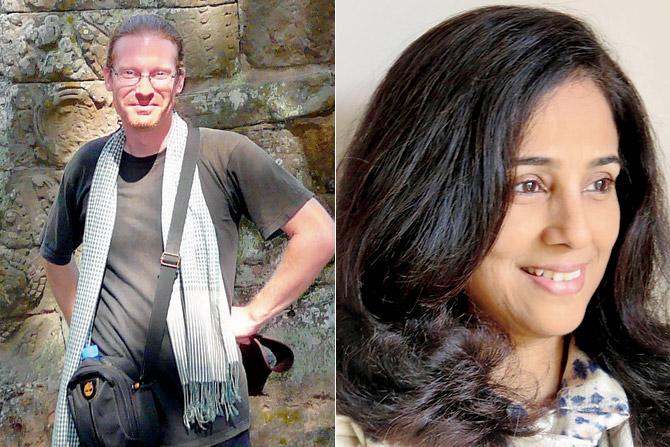Look beyond the Angkor Wat site, says a French architect in town to share about his love affair with Khmer architecture

Bayon temple face towers
Think of Cambodia, and the first thing that comes to mind are the famed ruins of Angkor Wat — it's even emblazoned on the national flag. But for French architect Olivier Cunin, it was a different temple that sparked his over-two-decade-old love affair with Khmer architecture.
Unlike the Angkor Wat, which has been widely studied and written about, there's a lot more mystery surrounding Cunin's favourite: the Bayon temple site. "Angkor Wat, whose architectural design is considered to be of the 'classical style', is very symmetrical and easy to understand. The design of Bayon seems chaotic and mysterious, as there are more structures linked to each other with several galleries and pavilions to create a complex space. There is no clearly stated path to access the Bayon temple, as in the case of Angkor Wat," said Cunin, who is in Mumbai to conduct a lecture series on ancient Khmer monuments and iconography.

Ravana relief from the temple of Banteay Srei
Among the more intriguing temple icons are the "face towers" at Bayon, which remain an enigma in architectural and archaeological circles. These are 59 towers in the temple complex with massive faces carved into them. "Researchers still argue fiercely about the deity represented on the face tower. Even if the question of identity is not yet resolved, the 59 face towers of the Bayon function both as icon and architecture. By incorporating this unique feature, the Bayon itself became an icon," said Cunin, whose research aims to both solve the puzzle of these temples and also preserve the heritage with the help of digital reconstruction.

Olivier Cunin and Swati Chemburkar
"To understand a temple, we first need to know its original design, and digital reconstruction is a very useful tool. It's not always possible to restore every temple physically but even if we could construct it virtually, it would be a huge help in our understanding of the Khmer monuments," he explains.
It's also interesting to note the Indian link with Khmer temples — some of which are Buddhist while others are dedicated to Hindu gods Vishnu and Shiva — despite the thousands of miles between the two countries. Cunin's colleague Swati Chemburkar, who directs a course on Southeast Asian art and architecture at Jnanapravaha, Fort, said,
"There was no India or Cambodia in the period we discuss. People crossing the Bay of Bengal in either direction a 1,000 years ago would have found enough linguistic and cultural connections between the regions of India and Cambodia to considered all to be the members of a large and varied but coherent community. The Khmer inscriptions mention the marriages of Indian Brahmins to Khmer princesses."
So what temples should visitors not miss during their visit? "The Bayon for its sheer complexity," he says, while also recommending Ta Prohm (being restored by the Archaeological Survey of India) and another favourite, Banteay Srei, which replicates Mount Kailasa, Shiva's heavenly abode.
AT Jnanapravaha, Talwatkar Marg, Fort
TILL April 12, 6 pm to 8 pm
COST Rs 3,000 per head
Catch up on all the latest Crime, National, International and Hatke news here. Also download the new mid-day Android and iOS apps to get latest updates
 Subscribe today by clicking the link and stay updated with the latest news!" Click here!
Subscribe today by clicking the link and stay updated with the latest news!" Click here!









